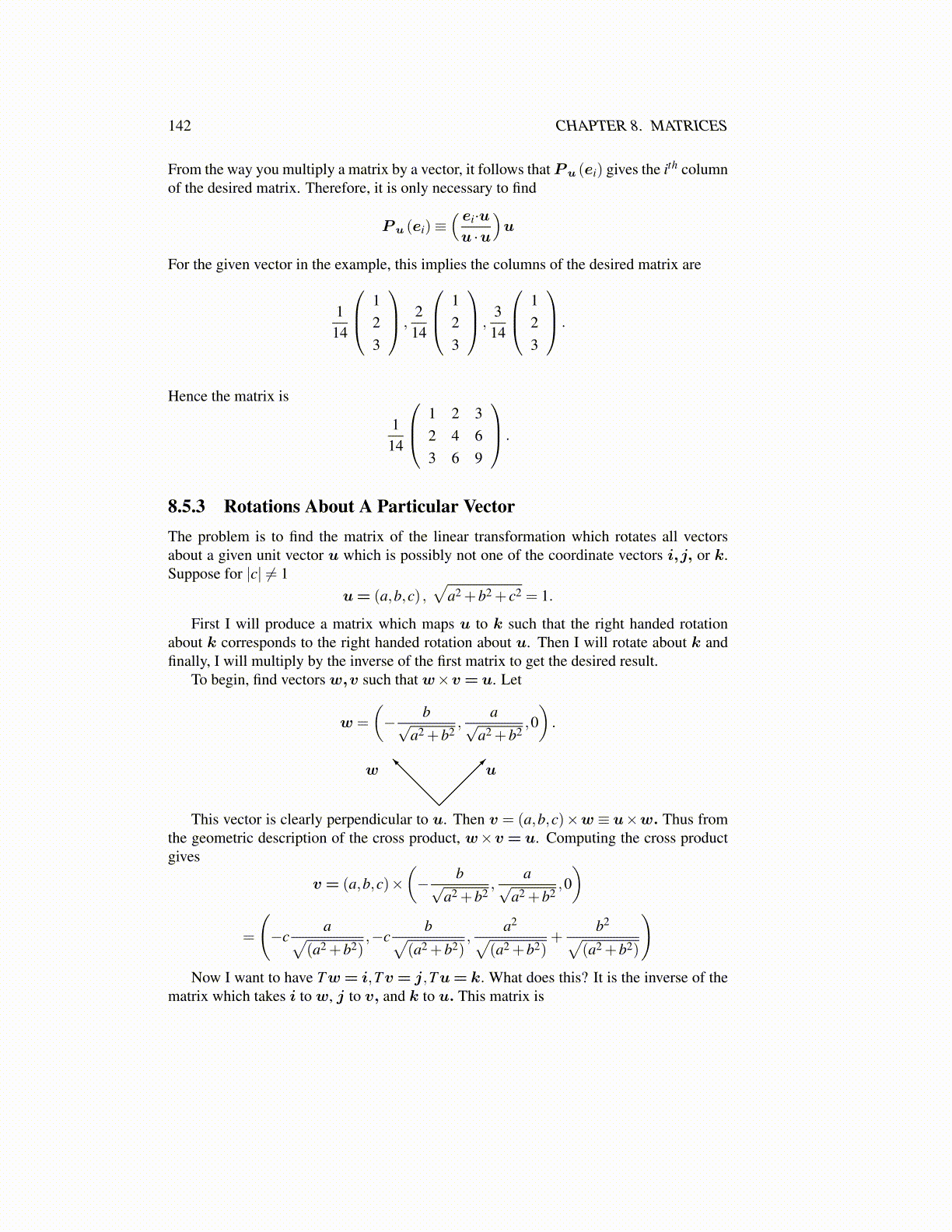
142 CHAPTER 8. MATRICES
From the way you multiply a matrix by a vector, it follows that Pu (ei) gives the ith columnof the desired matrix. Therefore, it is only necessary to find
Pu (ei)≡( ei·uu ·u
)u
For the given vector in the example, this implies the columns of the desired matrix are
114
123
,214
123
,3
14
123
.
Hence the matrix is
114
1 2 32 4 63 6 9
.
8.5.3 Rotations About A Particular VectorThe problem is to find the matrix of the linear transformation which rotates all vectorsabout a given unit vector u which is possibly not one of the coordinate vectors i,j, or k.Suppose for |c| ̸= 1
u= (a,b,c) ,√
a2 +b2 + c2 = 1.
First I will produce a matrix which maps u to k such that the right handed rotationabout k corresponds to the right handed rotation about u. Then I will rotate about k andfinally, I will multiply by the inverse of the first matrix to get the desired result.
To begin, find vectors w,v such that w×v = u. Let
w =
(− b√
a2 +b2,
a√a2 +b2
,0).
uw
This vector is clearly perpendicular to u. Then v = (a,b,c)×w ≡ u×w. Thus fromthe geometric description of the cross product, w×v = u. Computing the cross productgives
v = (a,b,c)×(− b√
a2 +b2,
a√a2 +b2
,0)
=
(−c
a√(a2 +b2)
,−cb√
(a2 +b2),
a2√(a2 +b2)
+b2√
(a2 +b2)
)Now I want to have Tw= i,Tv = j,Tu= k. What does this? It is the inverse of the
matrix which takes i to w, j to v, and k to u. This matrix is